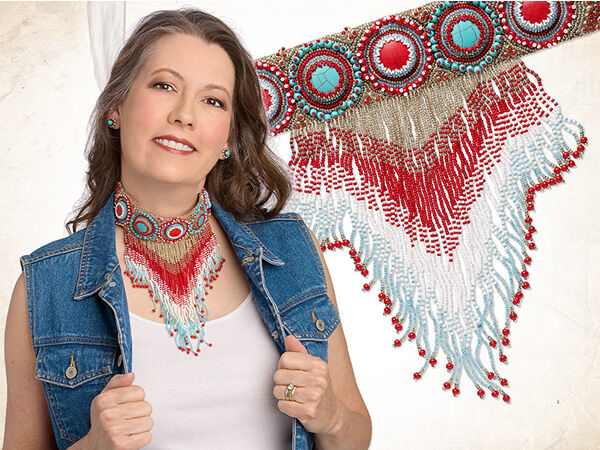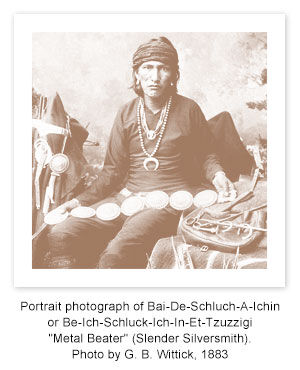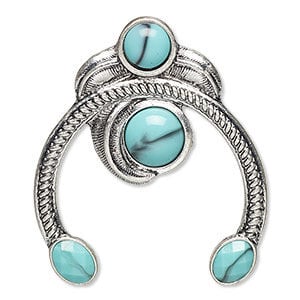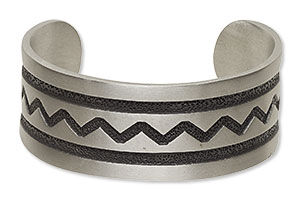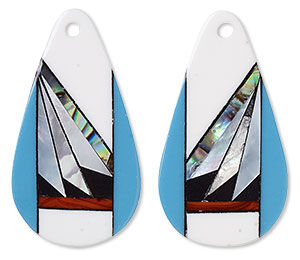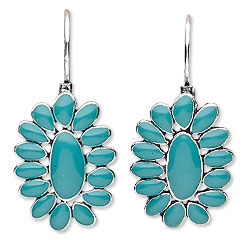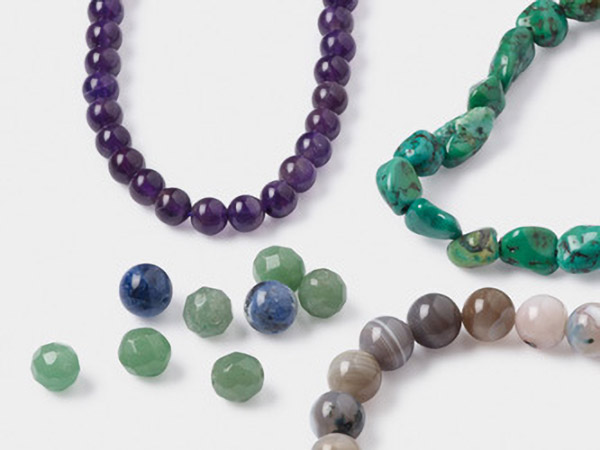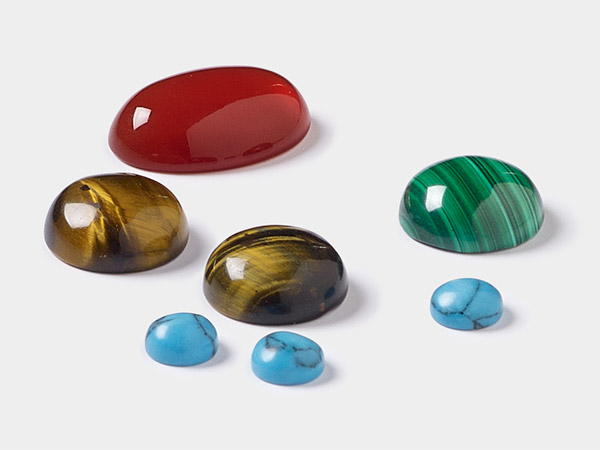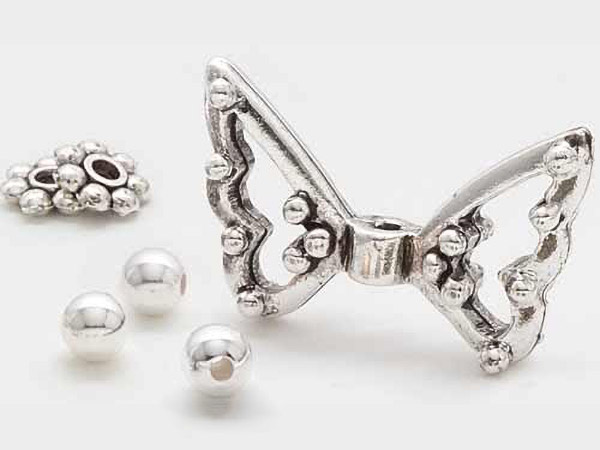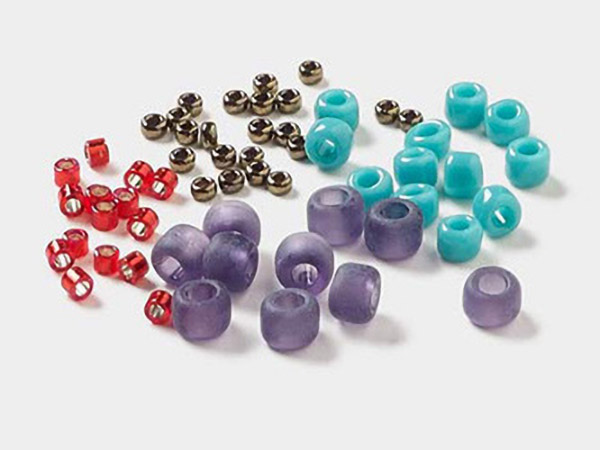Southwest Native American Jewelry After the 19th Century
By AnGeGi Soutache, Design Idea MH3M
Please note that the designs and products used as examples in this article are not made or sold by Southwest Native Americans. Their use in this article is to present readers with an approximate visual reference. We encourage jewelry designers to continue learning about the distinct tribal styles of Native Peoples to promote creative appreciation and avoid cultural appropriation or generalization when creating pieces inspired by indigenous art forms.
Indigenous peoples from the Southwest United States have been crafting and wearing jewelry for centuries. Long before the Europeans colonized the area, Navajo, Zuni, Hopi and Kewa Pueblo people were utilizing the natural bounties of the land to design an abundance of ornamental and functional adornments. Eventually, jewelry would become an indispensable element in their economic survival, acting as trade collateral and currency.
Today, purchasing authentic Native American jewelry and components is still an excellent way to support the indigenous peoples of the southwest region. Native American jewelry artists continue to use ancestral techniques in conjunction with modern materials, tools and styles to create regalia pieces, buttons, bridles, commercialized jewelry and more. Though there are many commonalities, each tribe has their own distinct jewelry history and style.
Navajo
Towards the end of the 19th century, a skilled Navajo blacksmith named Atsidi Sani learned to work silver alongside a Mexican metalsmith. Atsidi Sani began using his new silversmithing skills to forge bracelets, conchos and other types of Native American jewelry.
Later, he would pass on the knowledge to his sons and brother, Atsidi Chon. Atsidi Chon is considered to be the first smith to set turquoise (a gemstone believed by the Navajo to represent happiness, luck and health) into silver jewelry. He is also credited for bringing silversmithing to the Zuni.
The squash blossom necklace is perhaps the most recognizable Navajo design. Inspired by the horse bridle ornaments of Spanish conquistadors, this design is typically comprised of silver beads, cones and a large ''naja'' pendant. The naja (meaning "crescent") is seen as a symbol of protection.
In the 1900s, the Navajo style would drastically change to meet the rising demand from tourists for “authentic” Indian designs. These pieces were stamped with symbols unrelated to their culture, such as lizards, arrows, thunderbirds and more.
Today, the Navajo’s designs include a diverse mix of modern and traditional patterns, intricate silver leaves, hand-tacked flowers, sand-cast elements, stamping and more.
Another signature component of the squash blossom necklace is the use of bench-made beads. These beads are traditionally handmade by doming sterling silver discs, punching a hole in the center and forming a ridge along the edge of the newly created half domes. The artisan then places sterling silver solder inside the domes and wires them together tightly, rolling the resulting bead along a flat surface while applying heat. This melts the solder from the inside and holds the bead halves together.
Modern bench-made beads (also called bench beads) are made with pre-domed and -punched discs. The beads can be either sterling silver or silver-plated brass and are then hand-soldered together, sometimes by Native American artisans. Some of these beads have the ridge ground flat, then are finished with steel wool and oxidized. Referred to as Navajo pearl-style beads, they give designs an antiqued look.
Hopi
The Hopi people are most famous for their silver overlay. Until the 1930s, the Hopi tribe had access to very limited quantities of silver, so they innovated. Artists would carve traditional patterns and symbols into a piece of silver. A second, similarly shaped piece would be oxidized black. The carved layer was soldered to the black oxidized layer, which was visible through the cut-out designs of the top silver layer, creating a striking and beautiful contrast.
Hopi overlay jewelry is typically silver, but some special or significant pieces incorporate turquoise. As with the Navajo and many other Southwest Native American peoples, turquoise holds a special place in Hopi culture. Hunters would wear a small pouch holding turquoise around their neck to bring good fortune and warriors wore it into battle for protection. It is also traditionally placed around the home to ward off evil.
Zuni
Zuni use a great deal of colorful, high-quality, cut gemstones. With this, they are known for two distinct styles: stone inlay and "petit point". In the inlay style, stones are worked and then fit together side-by-side or with silver boundaries.
The Zunis do not cast their silver. Each piece is meticulously composed and fabricated starting with metal channels, also known as bezels, to accommodate a stone or group of stones. The gemstones are then cut to fit into the channels. After the stone segments have been affixed, the piece is then ground, sanded and polished flat or even with the metal.
The historical colors and materials in Zuni inlay are turquoise, red coral, black jet and white mother-of-pearl. Black and white represent duality, red symbolically represents Mother Earth and turquoise honors Father Sky.
The most traditional Zuni style of jewelry is petit point, which is identified by tiny turquoise stones, each supported in its own bezel setting. This technique is extremely time-consuming work and is very delicate in appearance. The result is an intricate gemstone assemblage similar to these earrings.
Kewa Pueblo
The Kewa Pueblo (formerly known as Santo Domingo) tribe is known for stone and mosaic inlay jewelry, but their heishi beads are their most notable contribution.
The word heishe means “shell bead” in the Eastern Keresan language of the Kewa Pueblo. These small tube or disc-shaped beads are traditionally hand ground, drilled, and strung into fluid strands. In modern years, heishi beads are available in many gemstone varieties and other materials, in addition to shell. Many are produced by machine, although there are still Kewa Pueblo artists who use the techniques passed down the generations to laboriously make jewelry and beads by hand.
Appreciating the stunning and intricate jewelry of Southwest Native American peoples helps us learn about and respect their deep cultural heritage and artistry. By admiring these artistic creations, we remind ourselves of the importance of honoring these cultural treasures and supporting the communities that create them. Through their craft, these Native artisans keep their traditions alive, sharing a part of their history and identity with the world. Respectful engagement with indigenous art forms enriches our understanding of the diverse tapestry of human creativity and heritage.
Shop for Your Materials Here:
Have a question regarding this project? Email Customer Service.
Copyright Permissions
All works of authorship (articles, videos, tutorials and other creative works) are from the Fire Mountain Gems and Beads® Collection, and permission to copy is granted for non-commercial educational purposes only. All other reproduction requires written permission. For more information, please email copyrightpermission@firemtn.com.
